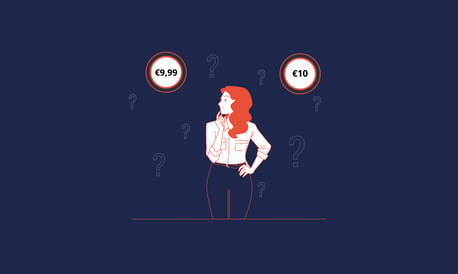Odd-even pricing: Use psychology to win more sales
A deep-dive into odd even pricing, with examples, and tips on how to build your own odd even price strategy to win more sales
Odd-even pricing taps into psychological research about how humans think and behave to successfully market and sell products and services.
Whether you know it or not, if you work with e-commerce, you’re always using decades of psychological research. Everything from sending out marketing emails, changing the color of a checkout button, producing an engaging blog post, or creating attractive new product images is deeply rooted in psychology. Choosing the optimal prices for your products is no different, as the last digit can influence consumers' perception of your product and drive them to purchase.
In short, e-commerce is psychology.
What is odd-even pricing
Odd-even pricing refers to a strategy used to price products that focuses on the last digit and whether it should be odd or even.
As the name suggests, odd prices avoid round numbers and are instead set just below an even price to make it appear lower than it really is. They will usually end with .95 or .99 or can also be distinctive numbers like 23 or 7.
Odd prices are generally perceived as a bargain compared to products with even-numbered price tags, even though the actual difference is small to non-existent in many cases. They feel very different.
On the other hand, even prices in whole tens, hundreds, thousands, etc. convey a premium quality product or service. The perception here is that in addition to adding a sense of completeness to your prices, rounded numbers also communicate that you are confident in the value of your product – that it’s worth every cent.
Even though there’s no real difference between €19.99 and €20.00, how we perceive them and how they’re framed in our minds is very different.
The psychology behind odd-even pricing
Odd-even pricing relies heavily on a psychological phenomenon called the ‘left-digit effect’. As we read from left to right, we direct a lot of our focus toward the first number that we encounter, with the remaining number being of less importance to us.
In a 2005 study, subjects were asked to estimate how much they could buy with $73. First, they were presented with prices ending in .00. Then the study was repeated with the prices ending in .99. Overwhelmingly, across all conditions, people thought they could afford to buy more when the prices ended in .99.
This indicates that judgments that we make based on numerical differences are anchored in the leftmost digit, where a consumer may think of €6.98 as ‘around 6 euros’, or consider €395 as ‘three hundred and some euros’.
When to use odd-even pricing
There’s more to odd-even pricing than simply setting all your prices to end in .99. The psychology behind our perception of numbers goes even deeper and impacts how we view the quality of a brand or product.
While prices ending in a 9 indicate good value, prices ending in a 0 suggest a more prestigious product. Harnessing the power of numbers means that you're able to position your products subtly in consumers’ minds, but the risk is that if you get it wrong, then you could end up actually harming your brand.
Because odd prices often resonate with value-conscious customers as bargains or discounts, they tend to motivate impulse buys and encourage larger purchases. The impression that you’re getting a good deal means that most of these customers spend less time deciding whether to make the purchase or not and are less concerned with the risk of buying more than they need.
However, if you’re looking for quality-conscious buyers that represent great retention potential, odd prices may not be for you. For companies that want to be seen as more of a high-end brand or with premium products or services, using prices ending in even numbers would be a better fit.
Look at the likes of Gucci, Rolex, Dolce & Gabbana, Dior, or any other brand selling luxury products, and you won’t find .99 in sight.
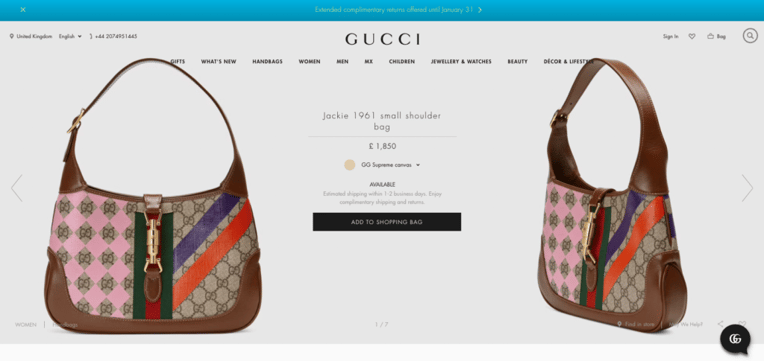
How to create an odd-even price strategy
A McKinsey economic sensitivity study found that pricing is by far the biggest tool for improving earnings. A 1% improvement in pricing raised profits by 6% on average.
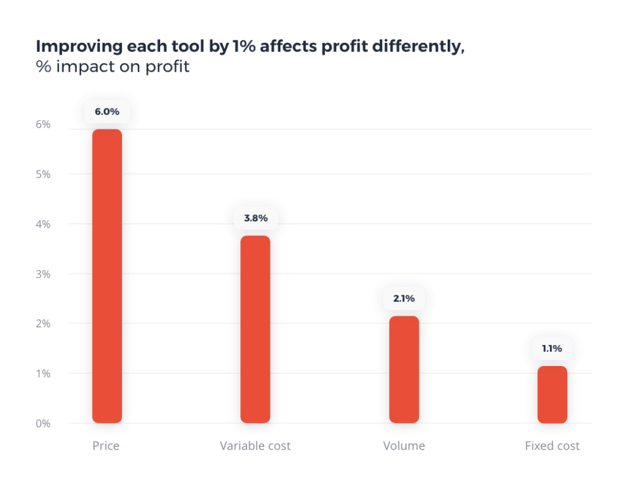
This shows just how big an impact pricing can have on revenue when compared to other levers, such as variable costs and sales volume, but optimizing prices can be more than just deciding between 9s and 0s. Here are some tips for creating an odd-even price strategy.
Make your prices memorable
So does this mean that the road towards increased sales is paved with nines and fives? Due to how widespread odd-even pricing has become, the simple answer is ‘no’. But you can be more creative and choose numbers that will stand out and capture the attention of visitors to your website.
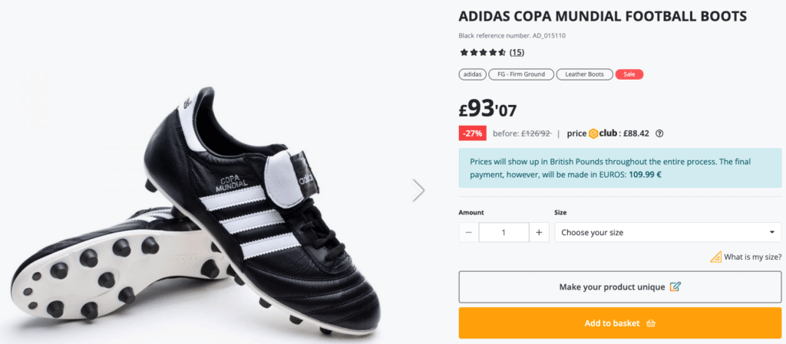
In this example you can see that the obscure price of £93.07 captures your attention for longer than if it was £99.99. Also, as the number is so precise, it gives the impression that you’re getting the most up-to-date price.
Use even numbers but give odd discounts
Combining this with price skimming allows you to present your products as if the discount is bigger than it actually is. For example, you could offer the initial price as an even figure but then present the discount as an odd number.
This makes use of the psychology behind both sets of numbers and helps to frame the discount. The example below, from ASOS, also really helps this product stand out when compared to their other discounted products on the same page.
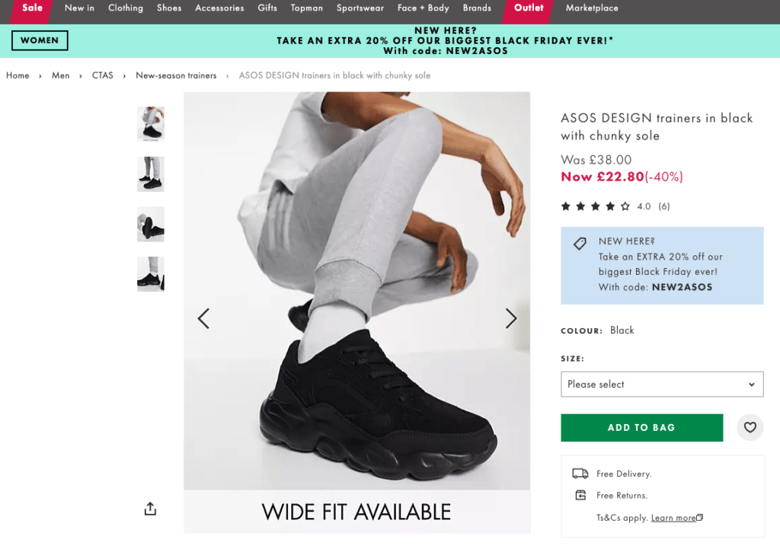
Using both odd and even numbers
There is also the option of using both odd and even prices. This approach can help businesses with a wide offering to attract a more varied mix of customers by distinguishing between their primary and secondary product ranges or signaling items on sale, for example, a product that’s marked down from €500 to €449.
How can PriceShape optimize your prices?
As I mentioned above, McKinsey’s study indicated that a 1% improvement in pricing raised profits by 6% on average.
At PriceShape, firstly, we find all of your competitors, and then monitor their prices and stock levels on a daily basis - but the real value comes from being able to take action on this data by setting dynamic price rules.
This will automatically increase your prices where you’re currently priced too cheaply compared to your competition and reduce the price to win more sales based on your desired profit margin.
And where does odd-even pricing come into this? Well, you can choose any price ending that you like when using PriceShape, and it couldn’t be easier to set up on our platform. You select the price ending you would like to apply to a specific strategy, and we’ll then update the price on your website, all automatically.
